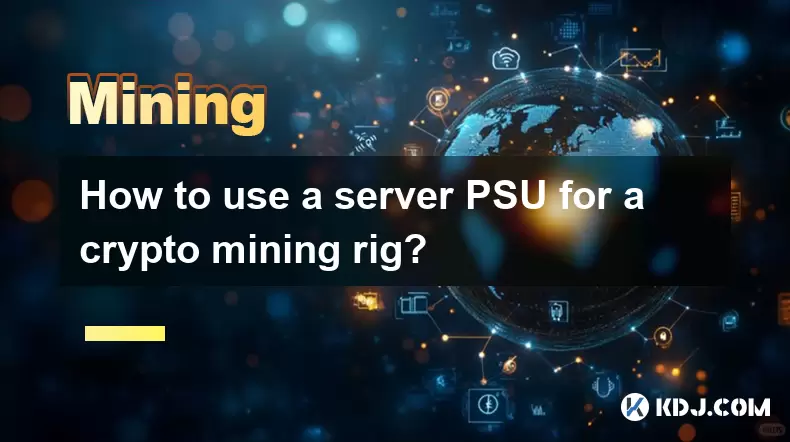-
 Bitcoin
Bitcoin $114200
0.00% -
 Ethereum
Ethereum $3637
0.56% -
 XRP
XRP $2.950
-2.01% -
 Tether USDt
Tether USDt $0.9999
0.02% -
 BNB
BNB $761.0
0.55% -
 Solana
Solana $164.1
-1.38% -
 USDC
USDC $0.9999
0.02% -
 TRON
TRON $0.3332
0.36% -
 Dogecoin
Dogecoin $0.2012
-0.52% -
 Cardano
Cardano $0.7261
-1.41% -
 Hyperliquid
Hyperliquid $37.62
-2.13% -
 Stellar
Stellar $0.3930
-2.65% -
 Sui
Sui $3.441
-0.16% -
 Bitcoin Cash
Bitcoin Cash $563.8
0.70% -
 Chainlink
Chainlink $16.50
0.09% -
 Hedera
Hedera $0.2424
-0.14% -
 Ethena USDe
Ethena USDe $1.001
0.01% -
 Avalanche
Avalanche $22.20
0.00% -
 Litecoin
Litecoin $118.0
-2.48% -
 UNUS SED LEO
UNUS SED LEO $8.991
0.12% -
 Toncoin
Toncoin $3.195
-3.87% -
 Shiba Inu
Shiba Inu $0.00001217
0.12% -
 Uniswap
Uniswap $9.674
-0.21% -
 Polkadot
Polkadot $3.633
1.00% -
 Monero
Monero $295.3
-0.82% -
 Dai
Dai $0.9999
0.00% -
 Bitget Token
Bitget Token $4.321
-0.41% -
 Cronos
Cronos $0.1392
0.73% -
 Pepe
Pepe $0.00001027
-0.89% -
 Aave
Aave $258.5
0.32%
How much memory does CPU mining require?
CPU mining's memory needs are minimal, prioritizing processing power over RAM. Even older CPUs can mine, though performance varies greatly depending on the algorithm and software used. Upgrading your CPU, not RAM, is key for better results.
Mar 25, 2025 at 06:15 pm

Key Points:
- CPU mining's memory requirements are minimal compared to GPU mining. The exact amount depends on the algorithm and the cryptocurrency being mined.
- Most CPUs can handle the memory demands of CPU mining, even older models. However, performance varies significantly.
- Memory limitations are rarely the bottleneck in CPU mining; processing power is the primary limiting factor.
- Focusing on efficient algorithms and optimizing your CPU settings is more crucial than maximizing RAM.
- The memory usage is dynamic, fluctuating based on the complexity of the mining process.
How Much Memory Does CPU Mining Require?
The memory requirements for CPU mining are surprisingly low. Unlike GPU mining, which demands substantial VRAM, CPU mining primarily relies on processing power rather than large memory pools. The actual memory usage fluctuates dynamically depending on the specific cryptocurrency's mining algorithm and the software used. However, even older CPUs with limited RAM can often participate in CPU mining.
The amount of RAM used varies widely based on the chosen cryptocurrency and mining software. Some algorithms are less memory-intensive than others. For example, mining a cryptocurrency using a less demanding algorithm like Proof-of-Work (PoW) might only use a few hundred megabytes of RAM. In contrast, more complex algorithms might consume slightly more, potentially reaching a few gigabytes, but this is still significantly less than what GPU mining demands.
It's important to differentiate between system RAM (used by the operating system and other applications) and the RAM specifically used by the mining software. The mining software itself only requires a modest amount of RAM. The overall system RAM usage will be higher, as it includes the operating system's needs, other running programs, and the mining software's requirements. However, the mining software's RAM consumption is generally a small fraction of your total system RAM.
One crucial aspect to consider is the CPU's processing power. While memory requirements are low, a CPU's processing power is the primary limiting factor in CPU mining profitability. Even with ample RAM, a weak CPU will struggle to compete with more powerful processors in the mining process. Therefore, upgrading your CPU will likely yield far better results than simply increasing your RAM.
The mining software you choose also plays a role. Different software programs have different memory footprints. Some are optimized for efficiency, minimizing RAM usage. Others might be less efficient, potentially consuming slightly more memory. Researching and selecting efficient mining software is important, but the impact on RAM is usually negligible compared to the impact on CPU usage.
Overclocking your CPU can potentially increase its hash rate and improve mining performance, but it also increases the demand on both processing power and memory. While the memory increase is typically minor, it's something to keep in mind, especially if you're already operating close to your RAM capacity. Overclocking should be done cautiously and within safe limits to avoid damaging your hardware.
The choice of mining pool also indirectly influences memory usage. A pool's communication protocols and software can affect the overall resource consumption of your mining setup. However, the effect on memory is generally small. The impact on the overall performance of your CPU mining is more substantial.
The operating system also consumes RAM, which indirectly affects the amount of RAM available for mining. Running fewer background applications will free up more RAM for the mining process, although again, this is rarely a bottleneck in CPU mining. Optimizing your operating system can help improve overall system performance, but it's unlikely to dramatically alter the memory demands of the mining software.
Frequently Asked Questions:
Q: Can I mine Bitcoin with a CPU?
A: Technically yes, but it's incredibly inefficient and unprofitable due to the high computational requirements of Bitcoin's mining algorithm. The rewards are far outweighed by the electricity costs.
Q: What's the difference between CPU and GPU mining memory usage?
A: GPU mining demands significantly more memory (VRAM) than CPU mining. GPUs are designed for parallel processing and handle large datasets, requiring substantial VRAM. CPUs use far less RAM for mining.
Q: Will adding more RAM improve my CPU mining performance?
A: Likely not significantly. CPU mining is primarily limited by processing power, not memory. Adding more RAM might help if you're running many other applications simultaneously, but it won't drastically boost your mining hash rate.
Q: What if my CPU mining software crashes due to low memory?
A: This is uncommon. If it happens, it's more likely due to a software bug or a conflict with other programs than a genuine lack of RAM. Try closing unnecessary background applications and restarting your mining software.
Q: Which algorithms are least memory-intensive for CPU mining?
A: Research specific algorithms used by various cryptocurrencies. Some older, less computationally intensive algorithms may place less strain on system memory. Always check the specific requirements of the coin you intend to mine.
Disclaimer:info@kdj.com
The information provided is not trading advice. kdj.com does not assume any responsibility for any investments made based on the information provided in this article. Cryptocurrencies are highly volatile and it is highly recommended that you invest with caution after thorough research!
If you believe that the content used on this website infringes your copyright, please contact us immediately (info@kdj.com) and we will delete it promptly.
- Ethereum, Transaction Volumes, and SEC Staking: Navigating the Regulatory Landscape
- 2025-08-06 22:30:13
- Crypto, Tokens, and Metrics: Navigating the New Frontier
- 2025-08-06 23:09:22
- Crypto Market Buzz: PROVE Surges as Coinbase, Binance List Token
- 2025-08-06 22:30:13
- BlockSack Who? Base Network and Layer 2s Shake Up the Crypto Scene
- 2025-08-06 23:10:13
- Brazil, Bitcoin, Hearing Date: Is Brazil About to Embrace Bitcoin?
- 2025-08-06 20:30:38
- Stabull DEX on Base Chain: A New Era for Stablecoins?
- 2025-08-06 20:47:53
Related knowledge

What are the differences between mining on Windows vs. Linux?
Aug 06,2025 at 11:29pm
Overview of Cryptocurrency Mining PlatformsCryptocurrency mining involves using computational power to solve complex cryptographic puzzles and validat...

How to build a mining rig inside a PC case?
Aug 06,2025 at 11:01pm
Understanding the Basics of a Mining Rig in a PC CaseBuilding a mining rig inside a PC case involves transforming a standard computer chassis into a d...

How to use a server PSU for a crypto mining rig?
Aug 06,2025 at 08:39pm
Understanding Server PSUs and Their Relevance to Crypto MiningCrypto mining rigs demand stable, high-wattage power supplies to run multiple GPUs effic...

Solo mining vs. pool mining: what are the pros and cons?
Aug 06,2025 at 08:15pm
Understanding Solo Mining in CryptocurrencySolo mining refers to the process where an individual miner attempts to solve a block on their own without ...

What was the highest APY for IRON mining?
Jul 23,2025 at 05:14am
Understanding IRON Token and Its Mining MechanismThe IRON token is a stablecoin that operates within the Iron Finance ecosystem, primarily on blockcha...

What is impermanent loss in IRON pools?
Jul 23,2025 at 09:00am
Understanding Impermanent Loss in the Context of IRON PoolsImpermanent loss is a phenomenon that affects liquidity providers in decentralized finance ...

What are the differences between mining on Windows vs. Linux?
Aug 06,2025 at 11:29pm
Overview of Cryptocurrency Mining PlatformsCryptocurrency mining involves using computational power to solve complex cryptographic puzzles and validat...

How to build a mining rig inside a PC case?
Aug 06,2025 at 11:01pm
Understanding the Basics of a Mining Rig in a PC CaseBuilding a mining rig inside a PC case involves transforming a standard computer chassis into a d...

How to use a server PSU for a crypto mining rig?
Aug 06,2025 at 08:39pm
Understanding Server PSUs and Their Relevance to Crypto MiningCrypto mining rigs demand stable, high-wattage power supplies to run multiple GPUs effic...

Solo mining vs. pool mining: what are the pros and cons?
Aug 06,2025 at 08:15pm
Understanding Solo Mining in CryptocurrencySolo mining refers to the process where an individual miner attempts to solve a block on their own without ...

What was the highest APY for IRON mining?
Jul 23,2025 at 05:14am
Understanding IRON Token and Its Mining MechanismThe IRON token is a stablecoin that operates within the Iron Finance ecosystem, primarily on blockcha...

What is impermanent loss in IRON pools?
Jul 23,2025 at 09:00am
Understanding Impermanent Loss in the Context of IRON PoolsImpermanent loss is a phenomenon that affects liquidity providers in decentralized finance ...
See all articles

























































































